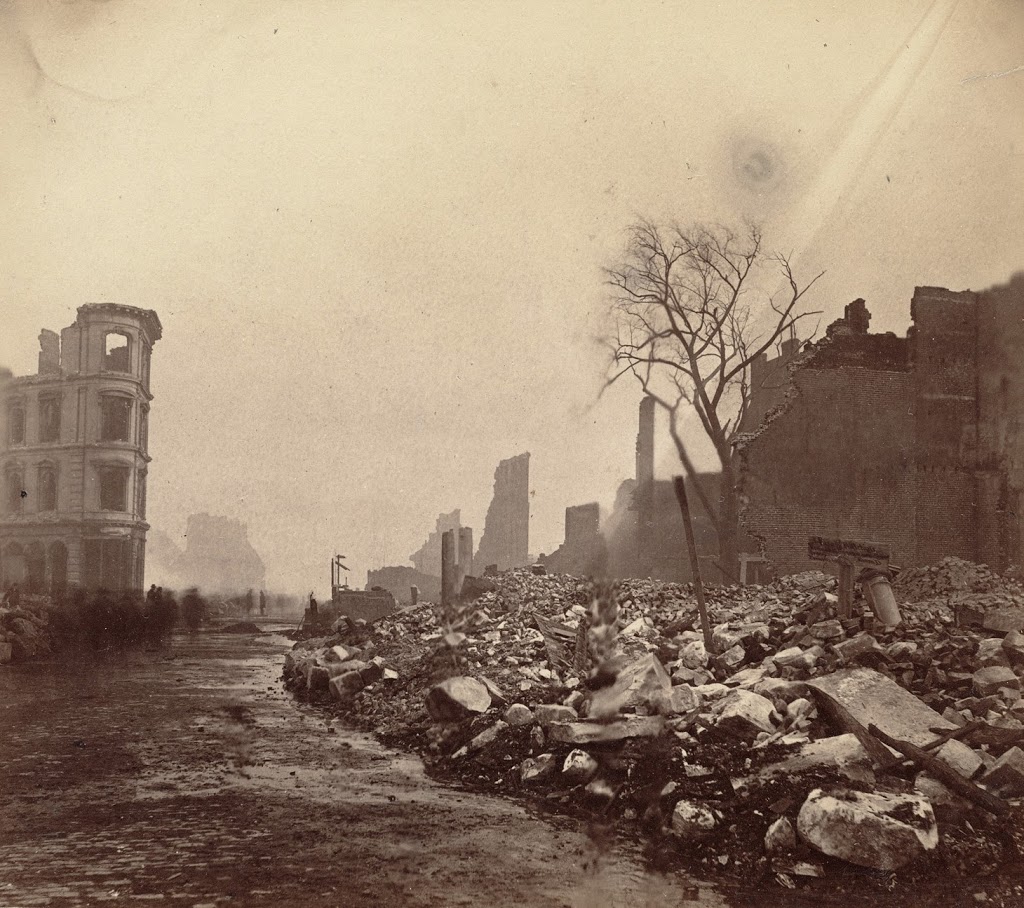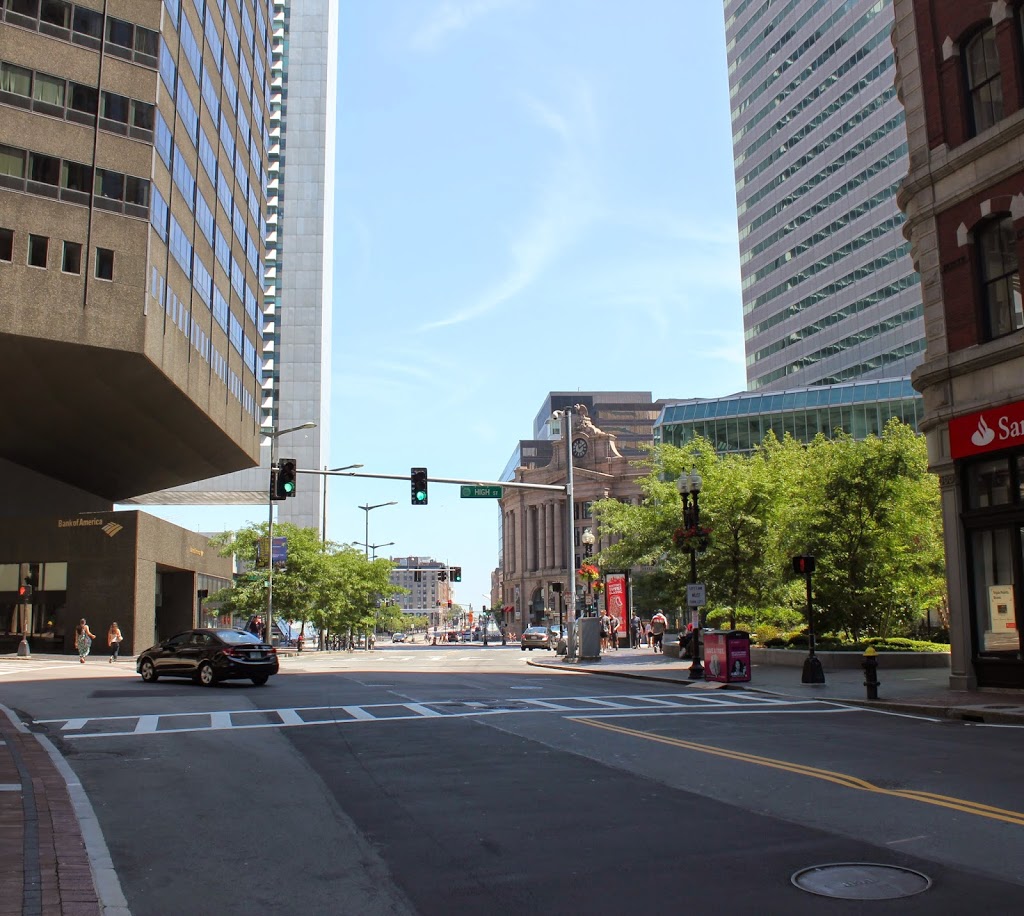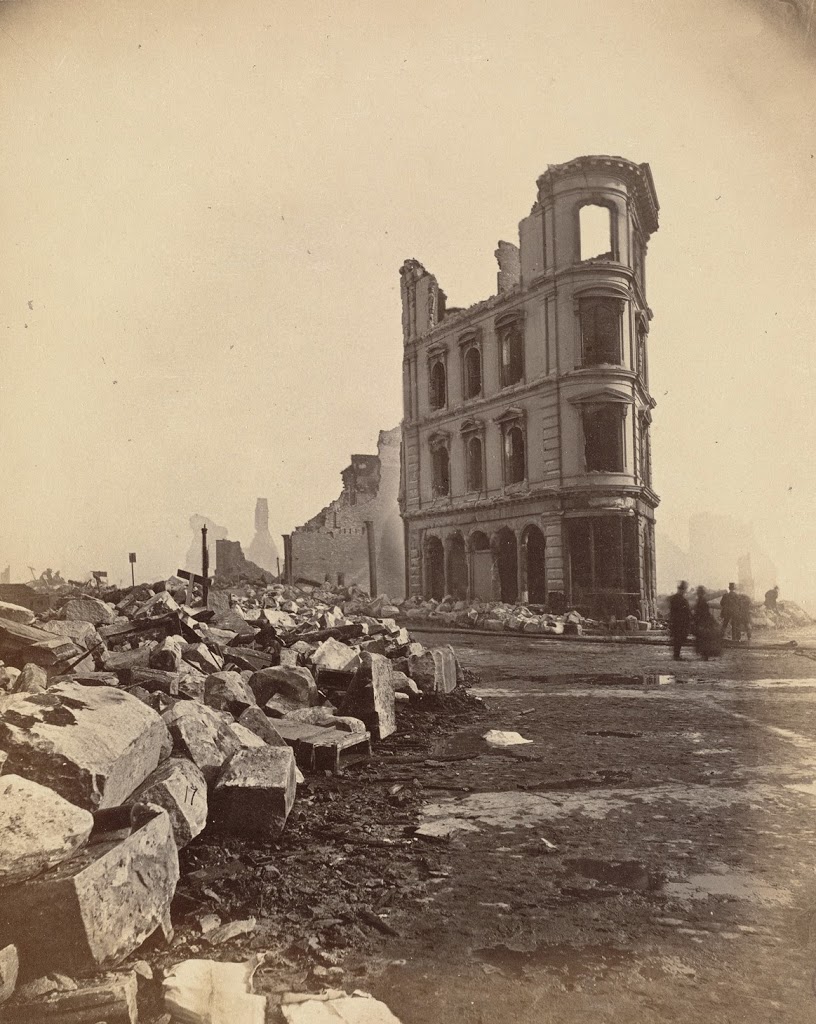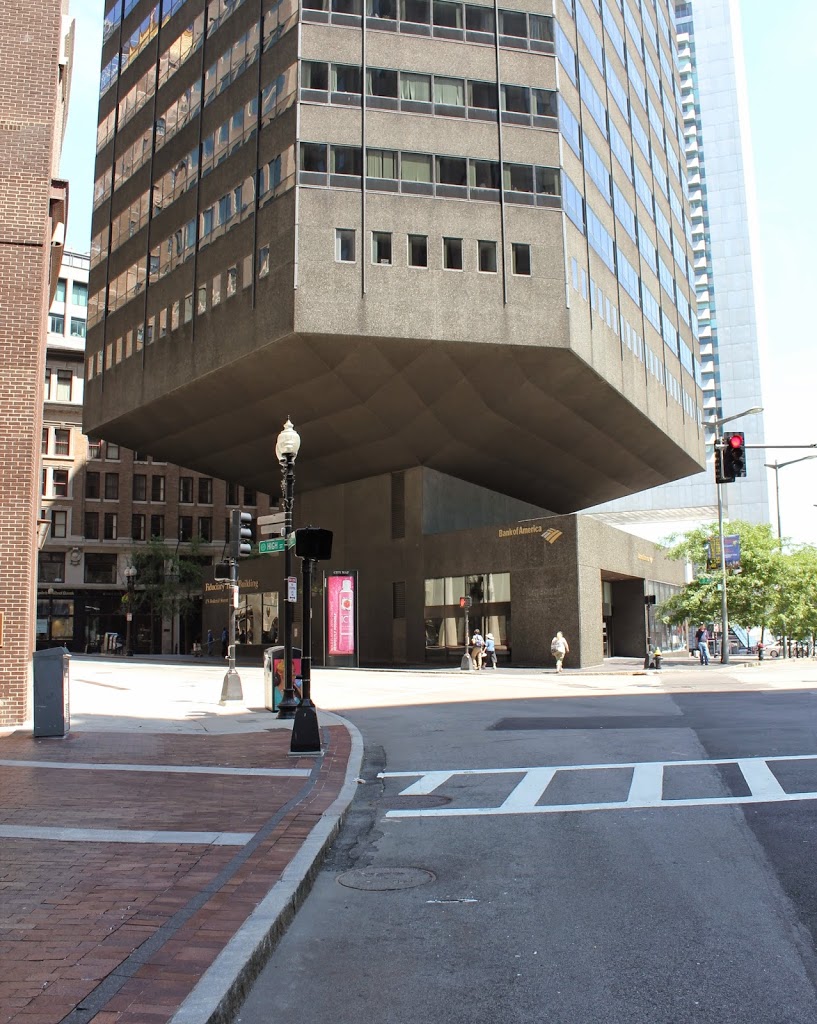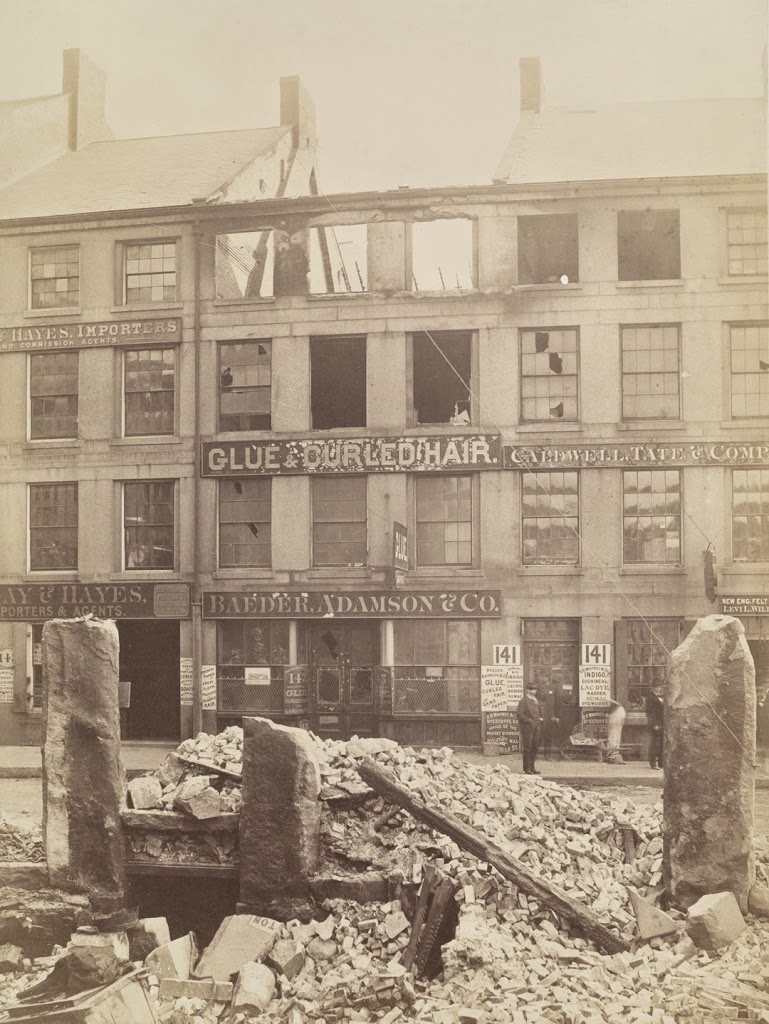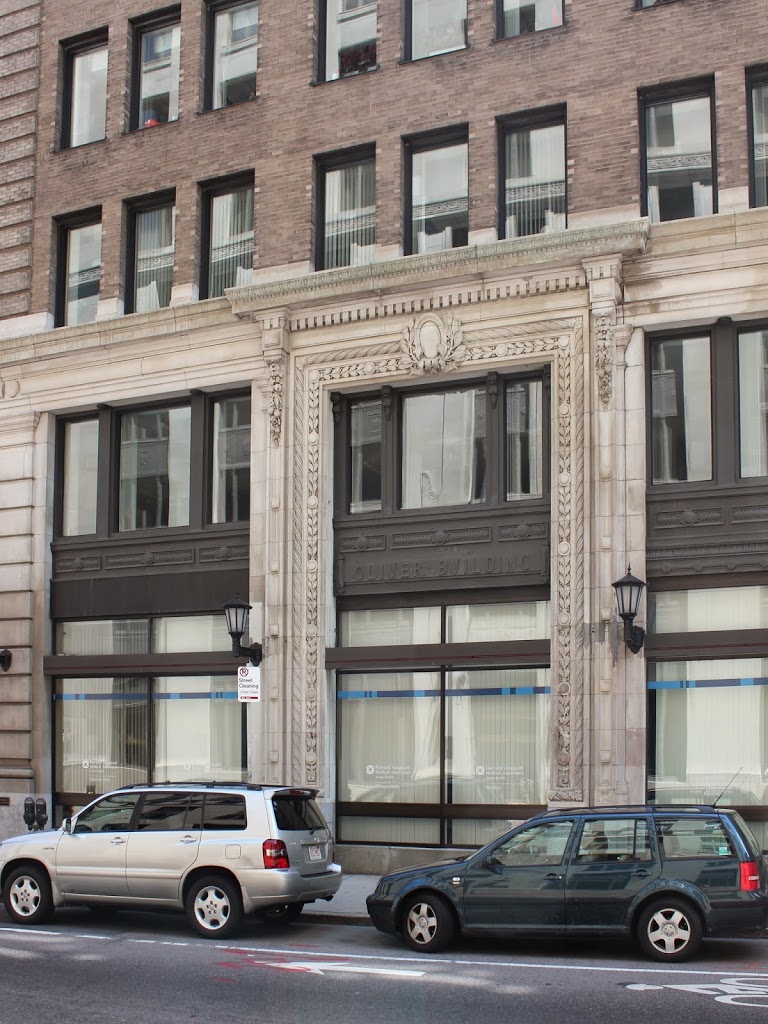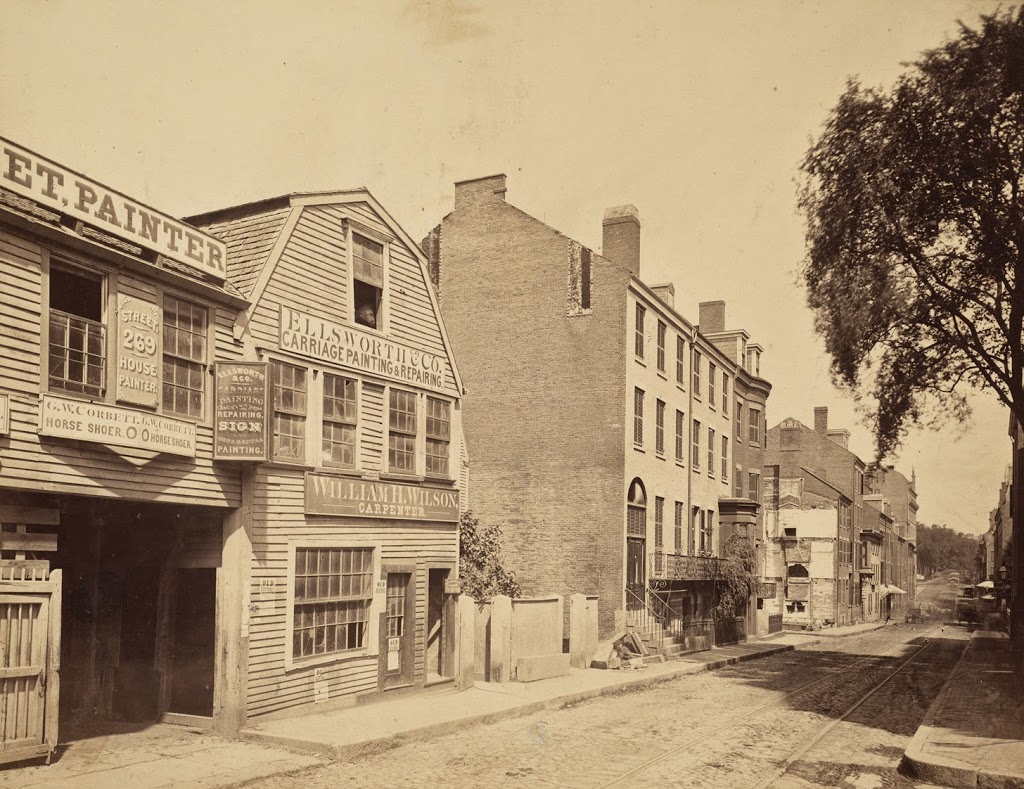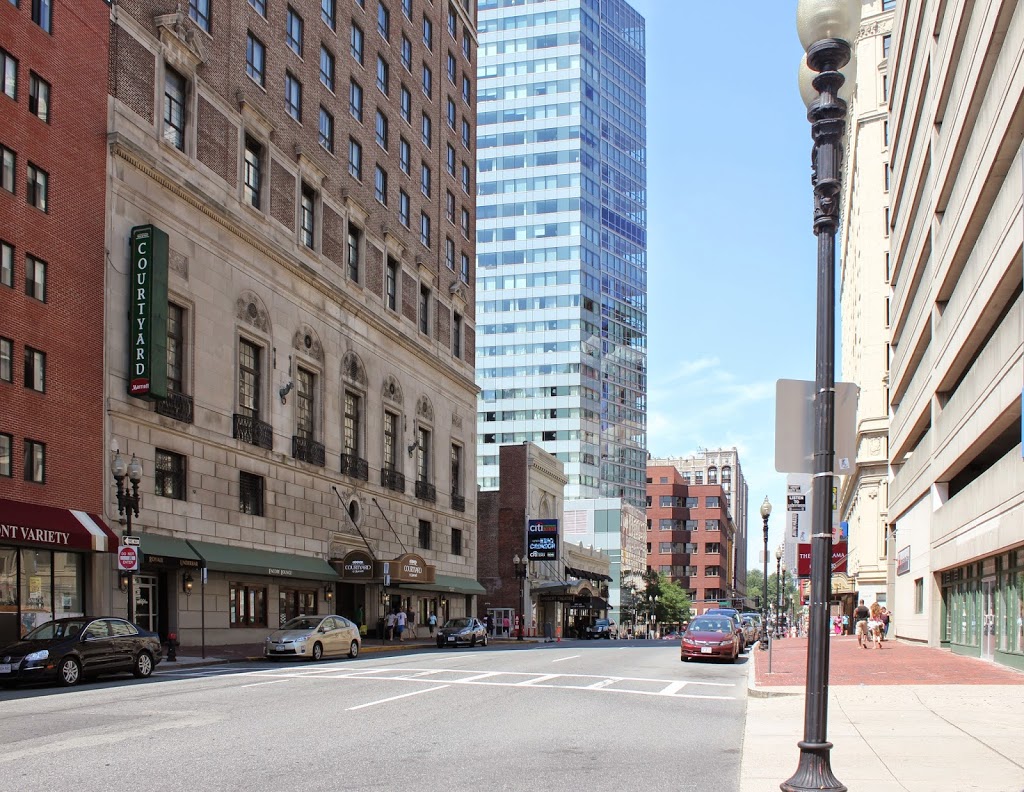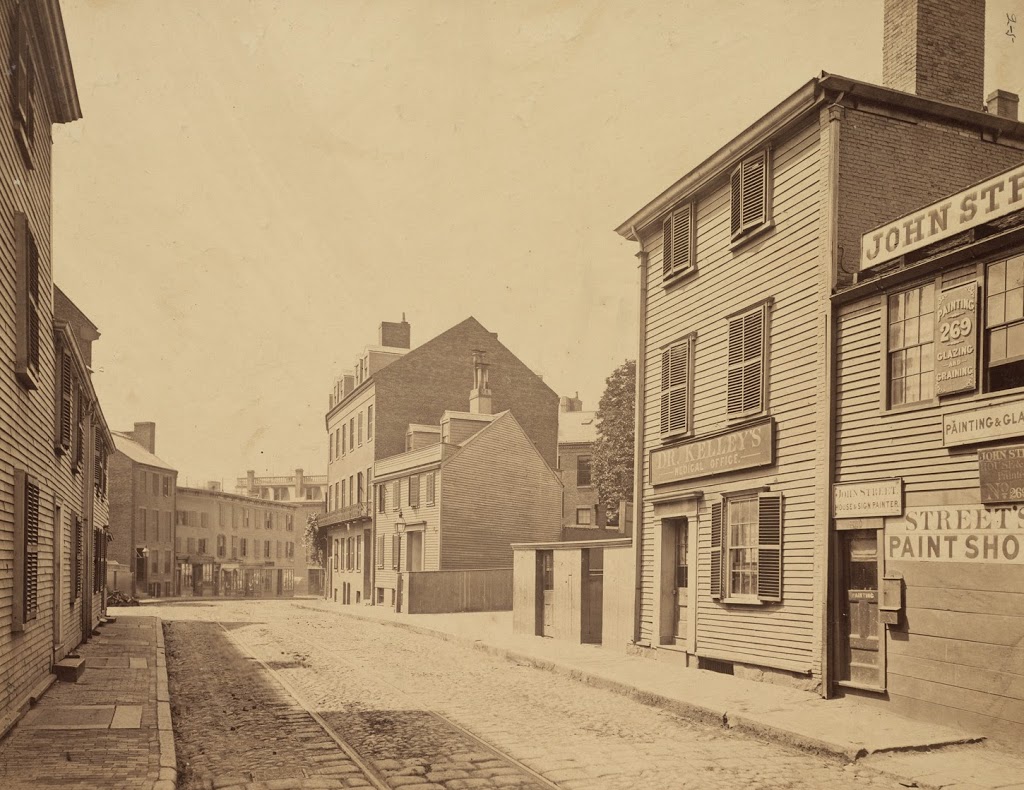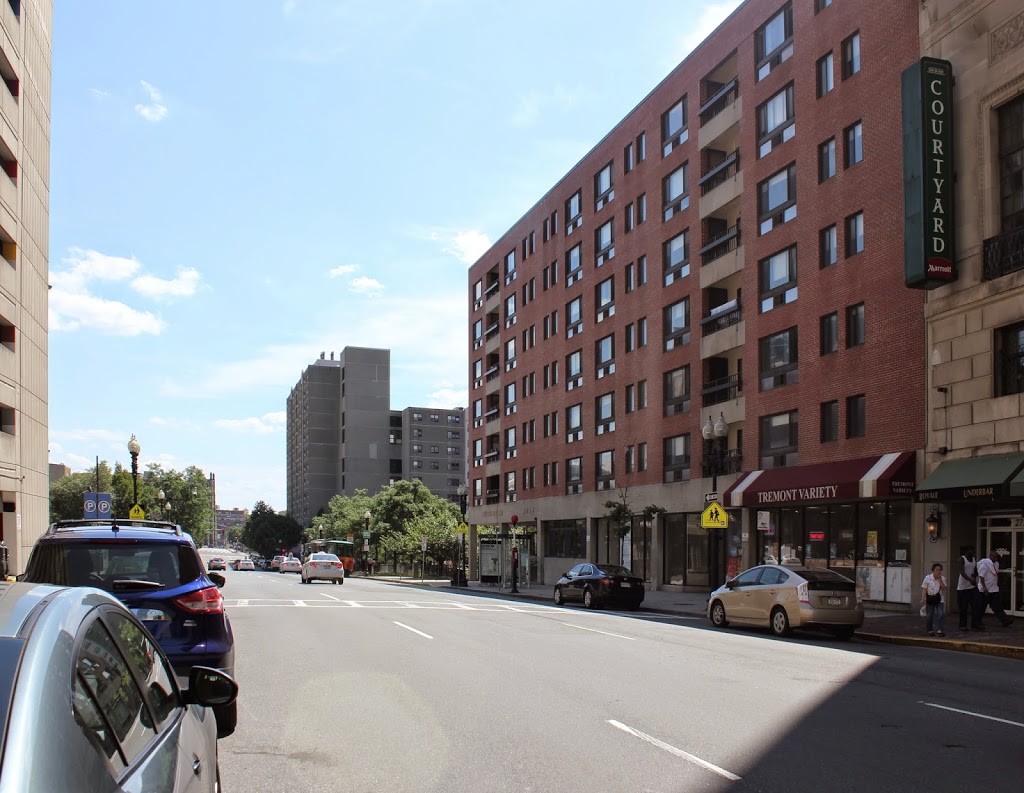Looking down Milk Street, with Old South Meeting House on the left, following the Great Boston Fire of 1872. Photo courtesy of Boston Public Library.
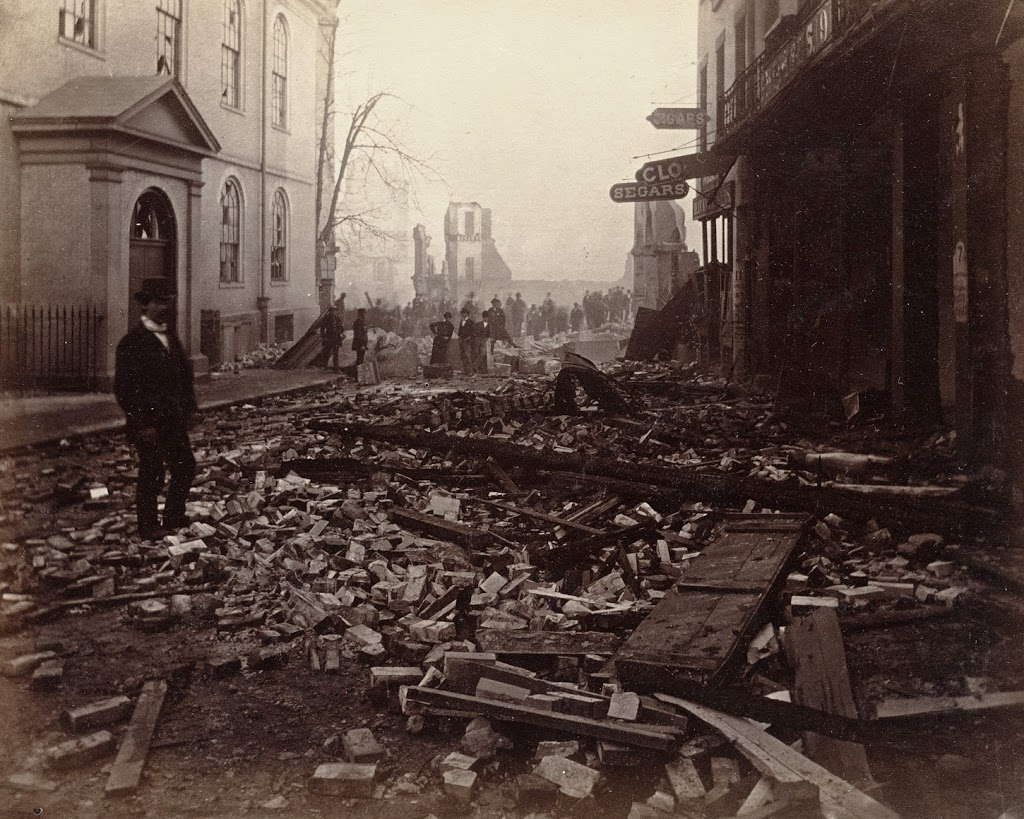
The same location in 2014:
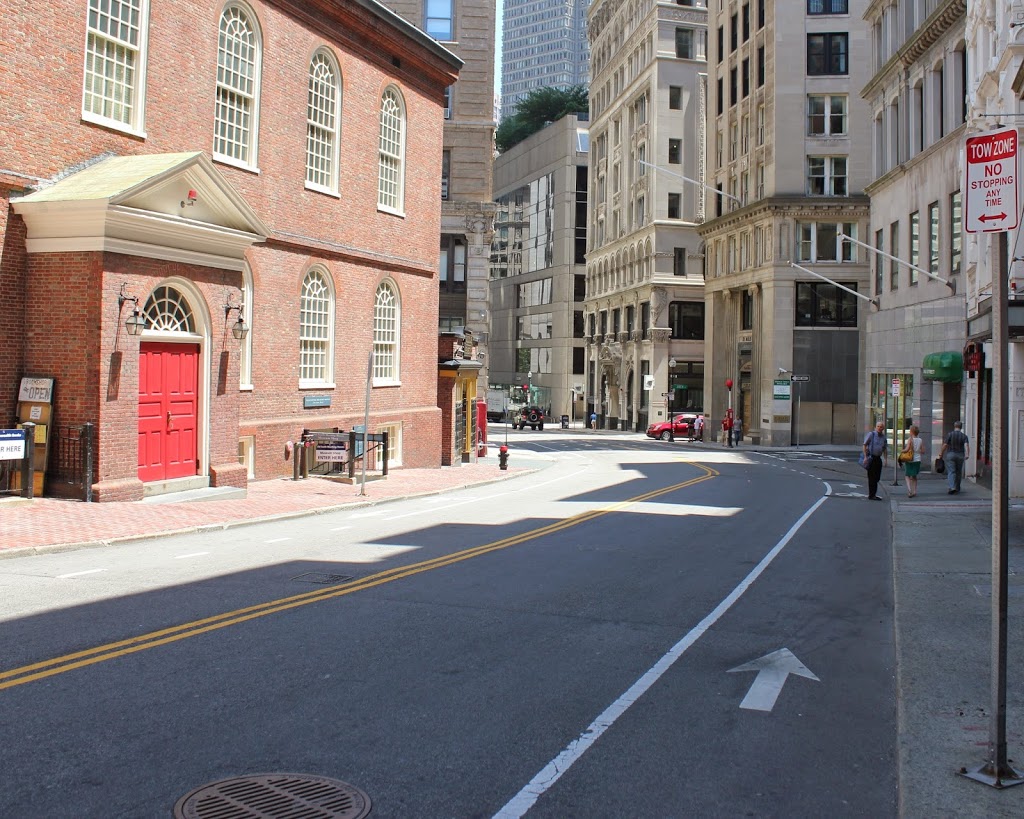
The first photo really illustrates just how close the historic Old South Meeting House came to being destroyed in the Great Fire of 1872. However, firefighters managed to save the building, which survived with minimal damage, including some broken windows as seen in the photo. This scene shows the upper limit of the fire, which started several blocks south of here on Summer Street and extended all the way up to Milk Street. A similar view of this scene, taken around 1911, can be seen in this post; the photo was taken a little further down the road, about where the three people are standing on the far right-hand side of the 2014 photo here.
Great Boston Fire (3)
Looking south on Summer Street with High Street on the left, after the Great Boston Fire of 1872. Photo courtesy of Boston Public Library.
The scene in 2014:
Taken facing just to the right of the photos in this post, this angle shows the view looking south on Summer Street. The first photo shows some of the absolute devastation that Boston suffered in the wake of the 1872 fire, which burned about 65 acres of land and 776 buildings. By way of comparison, the Great Chicago Fire, which occurred a year earlier, burned over 2,000 acres and destroyed 17,50 buildings. However, like Chicago, Boston recovered well. The second photo shows a very different Boston nearly a century and a half later; this area is a major center for business and transportation, with South Station in the distance, and many banks and other institutions having offices here.
Great Boston Fire (2)
Facing south at the corner of High Street (to the left) and Summer Street (to the right), following the Great Boston Fire of 1872. Photo courtesy of Boston Public Library.
The scene in 2014:
The Great Boston Fire of 1872 was one of the most devastating urban fires in American history, and this photo shows the scene near the epicenter on Summer Street. The fire began just a few blocks behind the photographer, leaving very little standing in the southern part of downtown Boston. The city recovered, though, and today this location is part of Boston’s financial district. However, while the buildings were rebuilt, Boston’s convoluted street network remained unchanged. Unlike many other major cities in America, and unlike even some other sections of Boston, downtown Boston does not have a regular street grid. The result is small, non-rectangular building lots like this one, a triangle bounded by Summer, High, and Federal Streets. In the 1970s, however, architects got creative and built the Fiduciary Trust Building, a hexagonally-shaped building that appears to be precariously balanced atop a much smaller base.
Great Boston Fire (1)
Fire-damaged building on Milk Street, between Batterymarch and Oliver Streets, following the Great Boston Fire of 1872. Photo courtesy of Boston Public Library.
The scene in 2014:
Only a year after the far more well-known fire in Chicago, Boston suffered a similarly disastrous fire of its own. It devastated much of the southern part of Boston’s downtown, reaching all the way up to Milk Street, where this photo was taken. The building in the 1872 photo advertises “glue, curled hair, and sandpaper” which seems like an odd combination to today’s readers. But, “curled hair” in this case referred not to a hairstyle but to some sort of industrial product made with animal hair. As to its specific use, I am not sure, but today neither the buildings nor the glue, curled hair, and sandpaper industry are still at this location. Today, the building at the site is identified above the ground floor windows as the Oliver Building, and was built in 1903, suggesting that at least one other building occupied this spot after the 1872 photo was taken.
Tremont Street, Boston (2)
Tremont Street in Boston, looking north toward Eliot Street (present-day Stuart Street) and Boston Common in the distance, in 1869. Photo courtesy of Boston Public Library.
The scene in 2014:
The first photo was taken from nearly the same location as the one in this post, just facing the opposite direction. All of the buildings in the first photo are gone, and most of them were probably demolished very soon after the first photo was taken, when Tremont Street was widened. Today, the narrow, cobblestone street is a distant memory, and Tremont Street is a major road that, in the 2014 photo, passes through Boston’s Theater District.
Tremont Street, Boston (1)
Tremont Street, facing south from between modern-day Stuart and Oak Streets, around 1869. Photo courtesy of Boston Public Library.
Tremont Street in 2014:
Today, Tremont Street is a major road in Boston, three lanes wide along with room for parking and sidewalks on both sides. It’s very different from how it appeared in the 1860s, before the road was widened and the buildings on the right were demolished. The narrow streets of the old photo were typical of pre-automobile Boston, and many similar streets survive to this day, helping to contribute to Boston’s reputation as a terrible place to drive.

